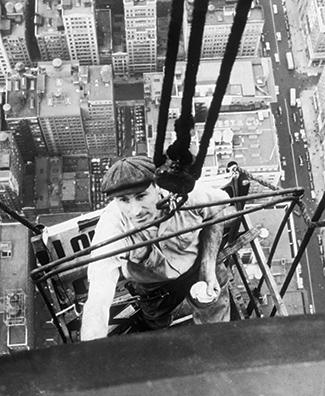1908: New Mutual Alliance building brings high finance to the LES
The Mutual Alliance Trust Company’s third office building officially opened for business in the Lower East Side 111 years ago this month, the New York Times reported. The firm’s new outpost reportedly heralded the banking industry’s arrival in a neighborhood known more for its impoverished tenements than wealth management. The six-story building on Grand Street, designed by architect John Hamilton, cost the company $175,000 to erect. Teller services with vaults lined the marble and bronze ground floor, while safety deposit boxes were kept in the basement and offices for the staff filled the upper floors. American business magnates Cornelius Vanderbilt and William Rockefeller were among the founders of Mutual Alliance in 1902. One of the most notable details about the prominent financiers’ new venture was that their $1 million of capital would “be used on Grand Street,” according to the Times. As of June 1907, the company had nearly $7 million in assets and two branches in LES and two more in Harlem. Its headquarters remained at 66 Beaver Street, near Wall Street.

Worker standing on a platform on the side of the Empire State Building.
1941: National construction sees the upside of war
The new year brought good tidings for the U.S. construction industry 78 years ago this month — despite the outbreak of World War II. Construction contracts in 1940 totaled upwards of $4 billion, a record high not seen since the 1920s, according to the industry publication Engineering News-Record. The combined value of U.S. construction contracts had climbed to $5.4 billion in 1928 as part of the real estate bubble that formed after World War I. But once the Great Depression set in, the value of contracts plummeted almost 90 percent by 1933. The increase in business at the start of the World War II was fueled by a rise in building activity to support the American defense program, which also drove industries such as shipbuilding and machinery. But the New York Times cautioned developers who were feeling buoyed by the constant thrum of work that “wartime prosperity is transitory and unreal.” “Serious after-effects can scarcely be avoided, but they may be somewhat alleviated if at no time we allow ourselves the luxury of illusions as to the nature of the ‘prosperity,’” the publication wrote. Today, the Associated General Contractors of America puts its annual estimate of total construction contracts around the country at $1.3 trillion.

1166 Avenue
1977: Foreclosed office skyscraper sets A record for loss
The New York State Employees Retirement System scooped up a three-year-old office tower at 1166 Sixth Avenue for a bargain 35 percent of its value 42 years ago this month, the New York Times reported. The 44-story skyscraper, previously owned by Sol Goldman and the family of the late Alexander DiLorenzo Jr., fell into foreclosure in 1976 after $500,000 in quarterly property taxes went unpaid. The building — valued at $100 million and acquired by the pension fund for $35 million — saw “the largest real‐estate loss on an individual property in the city’s history,” according to the Times. There were no other bidders for the property, many of whose floors were reportedly vacant at the time. The building’s former owners, Goldman and DiLorenzo, were among the largest noninstitutional real estate investors in the city in the 1970s. At the time of Goldman’s death in 1987, he owned more than 600 buildings. His nephew Lloyd Goldman of BLDG Management carries the family mantle as a major investor who partnered with Larry Silverstein on the redevelopment of the World Trade Center and, more recently, teamed up with Jeffrey Feil on the ill-fated New York Wheel

